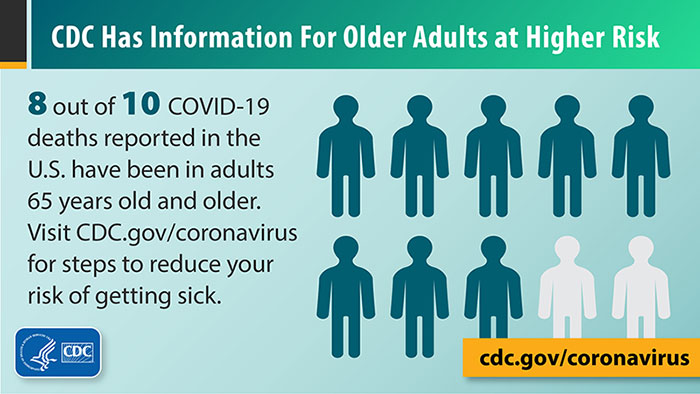In COVID-19 Fatalities Age Matters
 |
"Individual and collective efforts that minimize infections in older adults could substantially decrease total deaths.""In a scenario where the infection rate of the U.S. population reaches nearly 30 percent, our analysis indicates that protecting vulnerable age groups could prevent over 200,000 deaths."National Bureau of Economic Research, research study, U.S.
Researchers from Dartmouth College sought out an accurate gauge of COVID-19 infection rate using dozens of studies around the world, sorting the deaths by age groups -- at the same time they were aware that greater numbers were most likely afflicted with the novel coronavirus than were tested positive -- taking into account asymptomatic cases along with people contracting the virus before adequate testing capabilities were available.
According to their conclusions there is almost no chance children or young adults contracting COVID-19 would die from its effects. Research is also accumulating indicating young children are vastly less likely to spread the virus than are adults. What the study also indicated is that those older than 80 are massively more likely to die from complications relating to the disease, making it urgent that policy responses meant to protect seniors be implemented to save thousands of lives.
Those in the demographics of elderly above 80 years of age were seen to have a 24 percent fatality rate due to the effects of the SARS-CoV-2 virus causing COVID. People aged between 70 to 79 years were given a four percent fatality while death rates are more elevated than previously indicated for healthy, middle-aged adults who were linked with an infection fatality rate of 0.3 percent for ages 50 to 59, and one percent for those falling into the category of 60 to 69.
Age, it transpires, is more indicative of an increase in the rate of fatality caused by COVID-19 than are other health factors such as obesity or diabetes. The numbers, according to the researchers, are not fixed; new findings emphasize the need for public health measures meant to mitigate risk to middle-aged and older adults.
 |
Another research review just released by McMaster University analyzed 33 publications to find it highly unlikely for children under ten years of age to spread the virus, findings consistent across all evidence the researchers at McMaster surveyed. A larger study out of South Korea discovered that children younger than ten are much less likely to be infected and to spread the disease even within their own household.
South Korea maintained open schools throughout the influx of the virus since January, with little problems being evidenced. Children were found to be poor virus spreaders with those infected coming into contact with 57 people on average, with three only contracting the virus, the meaning of which should a small child contract COVID-19, people in that child's household have a roughly five percent chance of contracting the virus from the child.
Older children appear to spread the virus within households at the same rate as adults, but less outside the household, according to the South Korean study. On the other hand, older children were less likely to contract the virus than were adults, a consistent conclusion dating to the beginning of the pandemic.

Labels: COVID deaths, COVID-19, Pandemic, Research

0 Comments:
Post a Comment
<< Home